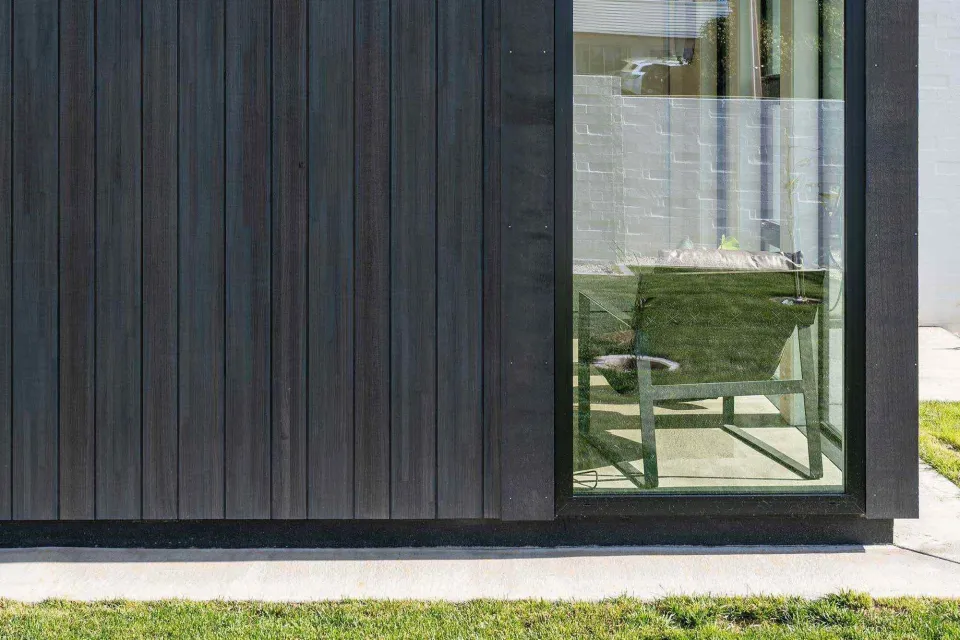-
About
-
Products
- By Timber Product
- Cladding
- Decking
- Joinery
- Screening
- Panelling
- View all
- By Application
- Exterior Cladding / Siding
- Exterior Rain Screen
- Exterior Roofing
- Interior Walls & Ceilings
- Soffits
- Screening, Fins & Battens
- Windows, Doors & Joinery
- Posts & Beams
- Accessories + Samples
- Coatings
- Fixings
- Samples
-
Shop
- Samples
- Timber Samples
- Architectural Sample Box
- View all
- Accessories
- Coatings
- Fixings
- View all
-
Resources
- By Resource Type
- Technical Data Sheets
- Guides & Manuals
- Technical Articles
- Profile Drawings
- View all
- How To
- How To Specify
- How To Install
- How To Maintain
- Projects
- Contact
Crafting the Finger Jointed System: Vulcan Nexus
Vulcan Nexus is created using thermally modified cuttings grade timber, finger jointed for strength and length.
Abodo uses a patented process of finger jointing to create longer lengths that won’t warp or buckle, reducing site waste and also enabling the use of knotty cuts grade timber.
Finger jointed Vulcan Nexus Cladding makes use of the log timber which would otherwise be cast aside from Vulcan’s clear grade product.
Here’s How the Finger Jointed Process Works
The process of creating Vulcan Nexus boards begins with a
state-of-the-art wood eye scanner, which locates defects in lengths of
thermally modified Abodo timber. Once identified, these defects are cut
from the board using a computerised optimiser, leaving short lengths of
timber known as ‘shook’.
The glue used in these steps is a polyurethane Type 1 structural exterior bond, which is VOC, solvent and formaldehyde free, helping to keep Vulcan Nexus a Red List free and Declare certified product.
Next, the blocks are cut with a horizontal band saw, perpendicular to the glue line for increased robustness. The resulting lengths, known in the industry as ‘blanks’, are then profiled into cladding with faces band-sawn and factory coated with Abodo Protector for a natural texture and stable, weather tight finish.
Now they are ready to be used as cladding, with the resulting lengths of up to 6 metres enabling double height facades and wider reaching horizontal spans without waste. This reduction is twofold, as the product also eliminates waste on the production line by using visually defective pieces of wood in a sustainable manner. The production process does result in up to 10% of the supply volume as ‘cut backs’ in length 1.8m and longer, these can be utilised in wall areas that don’t require long lengths such as above windows.
The resulting aesthetic is similar to natural timber, with a mottled look due to the pattern created by the finger joints with a variable grain pattern. Darker tones will hide the finger joint better than lighter tones that will tend to show up more after weathering.
A strong, stable and lightweight product, thermally engineered with a vertical grain orientation for optimum coating performance, Vulcan Nexus Cladding will soon be available with a pre-finished coating from a choice of a wide variety of colours – no on-site coating required.
As future building volumes increase, this feature timber innovation forges a sustainable path enabling the use of all lower log appearance grades.

